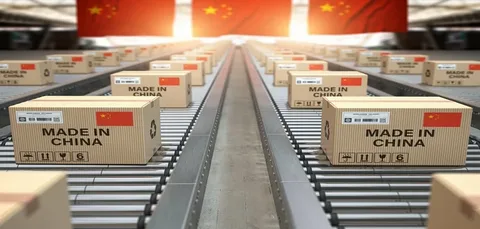As global trade continues to expand, sourcing products from China remains one of the most profitable strategies for businesses looking to lower production costs and scale quickly. Whether you’re an e-commerce entrepreneur, Amazon FBA seller, or a growing retail brand, Sourcing from China can give you access to a wide range of quality products at competitive prices.
In 2025, sourcing from China has become even more streamlined due to technological improvements, better regulations, and more accessible sourcing platforms. However, while opportunities are plentiful, it’s critical to understand the right approach. This guide breaks down the steps, tools, and considerations to help you start sourcing from China successfully.
1. Understand Why China is a Global Sourcing Hub
China has maintained its reputation as the “world’s factory” for decades. Its strengths include:
- Massive Manufacturing Base: From electronics to textiles, there are manufacturers for nearly every product category.
- Cost Efficiency: Competitive labor and material costs offer attractive pricing for global buyers.
- Skilled Workforce: A well-trained labor force equipped with the latest technology.
- Global Logistics Integration: Established supply chain routes and infrastructure that make international shipping easier.
Sourcing from China allows businesses to diversify supply chains, reduce production costs, and increase profit margins.
2. Define Your Product and Target Market
Before jumping into sourcing, you must clearly define what product you want to source. Be specific:
- Product dimensions
- Materials
- Functionality
- Target audience
- Compliance requirements (especially for electronics, cosmetics, food, etc.)
A well-defined product ensures you can communicate effectively with suppliers and reduces the risk of errors or misunderstandings.
3. Conduct Market Research
Understanding demand and competition is crucial. Use tools like:
- Google Trends
- Amazon Best Sellers
- Alibaba Hot Products
- Social Media Trends
By studying these platforms, you’ll gain insight into trending products, price ranges, and consumer feedback. This data helps refine your product idea and determine whether it’s worth sourcing from China.
4. Choose Between Direct Sourcing and Using a China Sourcing Agent
There are two common methods to source from China:
a) Direct Sourcing
This involves you managing the entire process on your own, including:
- Finding suppliers on platforms like Alibaba, Made-in-China, or 1688
- Contacting factories directly
- Negotiating prices and MOQ
- Arranging logistics and inspections
This method gives you more control and potentially lower costs but also requires more time, experience, and risk tolerance.
b) Hiring a China Sourcing Agent
A professional China sourcing agent helps you find trusted suppliers, negotiate pricing, handle quality control, and arrange shipping. This is especially helpful if:
- You’re new to international trade
- You don’t speak Mandarin
- You want to avoid scams
- You’re sourcing complex or custom products
Agents often have a network of verified factories and can perform on-site inspections, which adds an extra layer of reliability.
5. Find Reliable Suppliers
To avoid scams and ensure product quality, you must verify your suppliers thoroughly. Here’s how:
- Use Trusted Platforms: Alibaba, Global Sources, and Made-in-China.com are great starting points.
- Check Business Licenses: Ask for official registration documents.
- Request Samples: Always order samples before placing a large order.
- Read Reviews and Audit Reports: Many platforms now provide factory audits and buyer reviews.
- Communicate Clearly: Look for responsive, professional communication.
Avoid deals that seem too good to be true or suppliers unwilling to offer samples.
6. Negotiate Terms and Pricing
Once you shortlist suppliers, it’s time to negotiate. Consider these key terms:
- MOQ (Minimum Order Quantity): Many factories have minimums, but some can be flexible for new customers.
- Price per Unit: Understand what’s included in the price (packaging, labeling, etc.)
- Payment Terms: Common options include 30% upfront and 70% after shipment.
- Lead Time: Ensure clarity on how long production will take.
- Incoterms: FOB (Free on Board) and EXW (Ex Works) are the most used terms. FOB is generally better for international buyers.
Remember, negotiation is expected and part of the process in China’s business culture.
7. Arrange Quality Control and Product Inspections
Quality assurance is crucial when sourcing from overseas. Here’s how to protect your investment:
- Hire a Third-Party Inspection Company: Many services in China will inspect goods before shipment.
- Request Production Updates: Get photos and videos during manufacturing.
- Define Quality Standards in Writing: Include details in the purchase agreement.
Never skip this step, especially for large orders or new suppliers.
8. Handle Logistics and Shipping
Shipping from China to your country involves several options:
- Air Freight: Fast but expensive. Ideal for small or urgent orders.
- Sea Freight: Cost-effective for large shipments but takes longer.
- Courier Services (DHL, FedEx): Good for small batches and sample orders.
Partner with a freight forwarder who understands Chinese export laws and your country’s import requirements. They can manage customs, duties, and documentation.
9. Understand Customs, Duties, and Import Regulations
Each country has different import rules. Make sure to:
- Get an Importer’s Tax ID or Registration
- Understand applicable tariffs or duties
- Prepare documents such as:
- Commercial invoice
- Packing list
- Bill of lading
- Certificate of origin (if needed)
- Commercial invoice
A customs broker can simplify this process for you and prevent delays or penalties.
10. Optimize Your Supply Chain
Once your first order goes smoothly, think about scaling:
- Develop Long-Term Relationships: Building trust with suppliers can lead to better pricing, priority production, and flexibility.
- Diversify Your Suppliers: Don’t rely on one manufacturer. Always have a backup.
- Consider OEM or Private Labeling: As your brand grows, custom packaging and branding can increase perceived value and profitability.
Continuous improvement of your sourcing process will help you stay competitive and meet customer expectations.
11. Embrace Digital Tools for Sourcing in 2025
Sourcing in 2025 is more advanced than ever before. Take advantage of digital innovations such as:
- AI-driven product research tools that predict product trends
- Virtual factory tours via video calls or VR
- Automated order tracking systems
- Smart contracts using blockchain for secure transactions
These technologies reduce uncertainty, improve communication, and enhance transparency between buyers and suppliers.
12. Avoid Common Mistakes
Here are frequent mistakes first-time importers make:
- Choosing suppliers based only on the lowest price
- Not requesting samples
- Ignoring product certification or safety compliance
- Skipping contracts or written agreements
- Not preparing for delays or hidden costs
Being informed and cautious from the beginning saves time, money, and stress.
Conclusion
Sourcing from China in 2025 is a strategic move for businesses aiming to grow profitably and expand their product offerings. With improved platforms, smarter tools, and experienced partners, the process has become more accessible than ever.
Whether you choose to handle sourcing directly or work with a professional china sourcing agent, the key to success is preparation, research, and ongoing optimization. By understanding the full picture—from selecting the right supplier to managing logistics and quality—you position yourself for long-term success in the global marketplace.
Now is the perfect time to tap into China’s manufacturing potential and build a supply chain that fuels your business growth.




